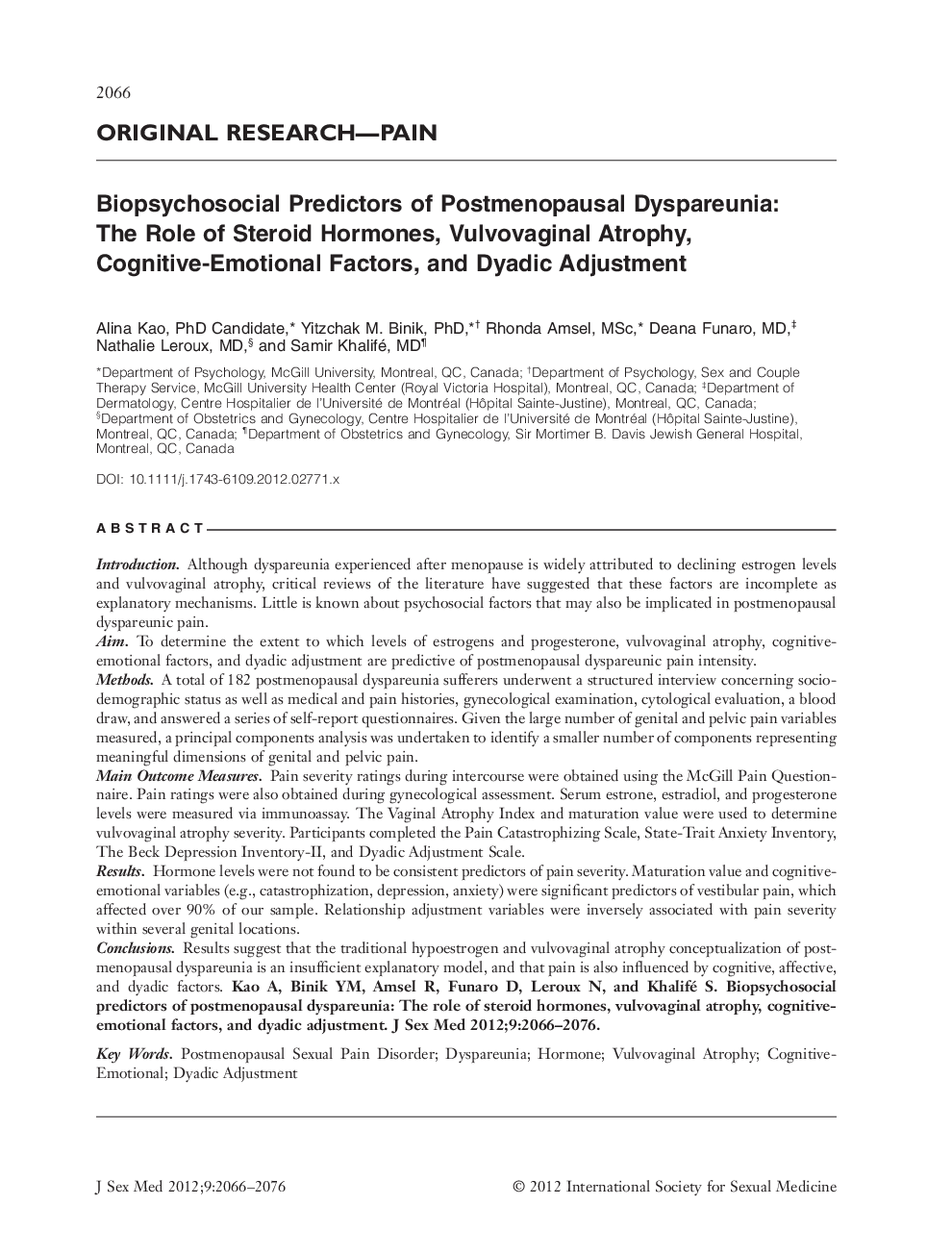| Article ID | Journal | Published Year | Pages | File Type |
|---|---|---|---|---|
| 4270637 | The Journal of Sexual Medicine | 2012 | 11 Pages |
ABSTRACTIntroductionAlthough dyspareunia experienced after menopause is widely attributed to declining estrogen levels and vulvovaginal atrophy, critical reviews of the literature have suggested that these factors are incomplete as explanatory mechanisms. Little is known about psychosocial factors that may also be implicated in postmenopausal dyspareunic pain.AimTo determine the extent to which levels of estrogens and progesterone, vulvovaginal atrophy, cognitive‐emotional factors, and dyadic adjustment are predictive of postmenopausal dyspareunic pain intensity.MethodsA total of 182 postmenopausal dyspareunia sufferers underwent a structured interview concerning sociodemographic status as well as medical and pain histories, gynecological examination, cytological evaluation, a blood draw, and answered a series of self‐report questionnaires. Given the large number of genital and pelvic pain variables measured, a principal components analysis was undertaken to identify a smaller number of components representing meaningful dimensions of genital and pelvic pain.Main Outcome MeasuresPain severity ratings during intercourse were obtained using the McGill Pain Questionnaire. Pain ratings were also obtained during gynecological assessment. Serum estrone, estradiol, and progesterone levels were measured via immunoassay. The Vaginal Atrophy Index and maturation value were used to determine vulvovaginal atrophy severity. Participants completed the Pain Catastrophizing Scale, State‐Trait Anxiety Inventory, The Beck Depression Inventory‐II, and Dyadic Adjustment Scale.ResultsHormone levels were not found to be consistent predictors of pain severity. Maturation value and cognitive‐emotional variables (e.g., catastrophization, depression, anxiety) were significant predictors of vestibular pain, which affected over 90% of our sample. Relationship adjustment variables were inversely associated with pain severity within several genital locations.ConclusionsResults suggest that the traditional hypoestrogen and vulvovaginal atrophy conceptualization of postmenopausal dyspareunia is an insufficient explanatory model, and that pain is also influenced by cognitive, affective, and dyadic factors. Kao A, Binik YM, Amsel R, Funaro D, Leroux N, and Khalifé S. Biopsychosocial predictors of postmenopausal dyspareunia: The role of steroid hormones, vulvovaginal atrophy, cognitive‐emotional factors, and dyadic adjustment. J Sex Med 2012;9:2066–2076.
